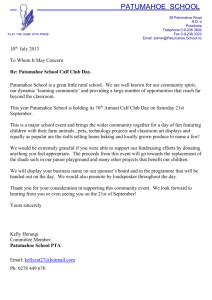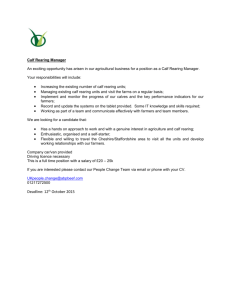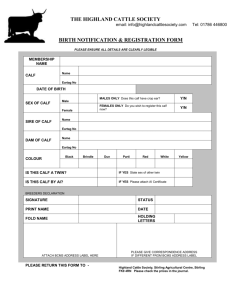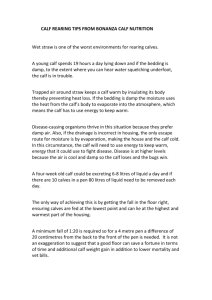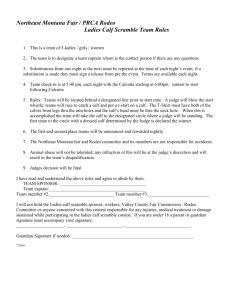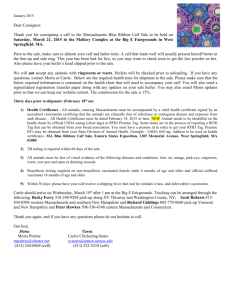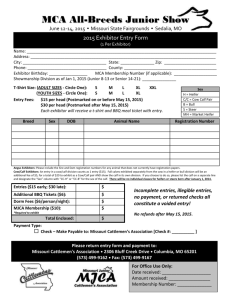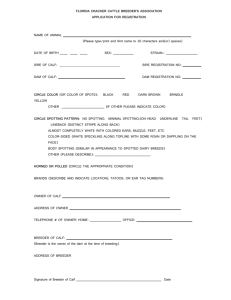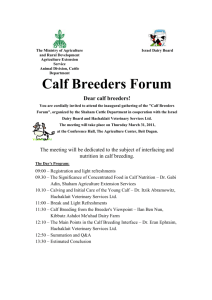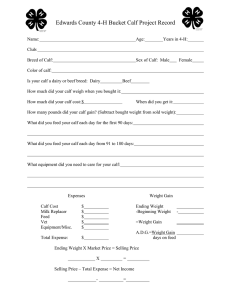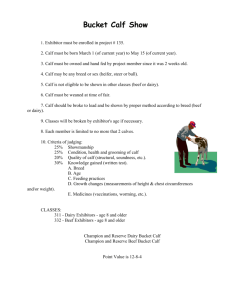Calf Rearing Hints - Is it necessary to give water to a calf?
advertisement
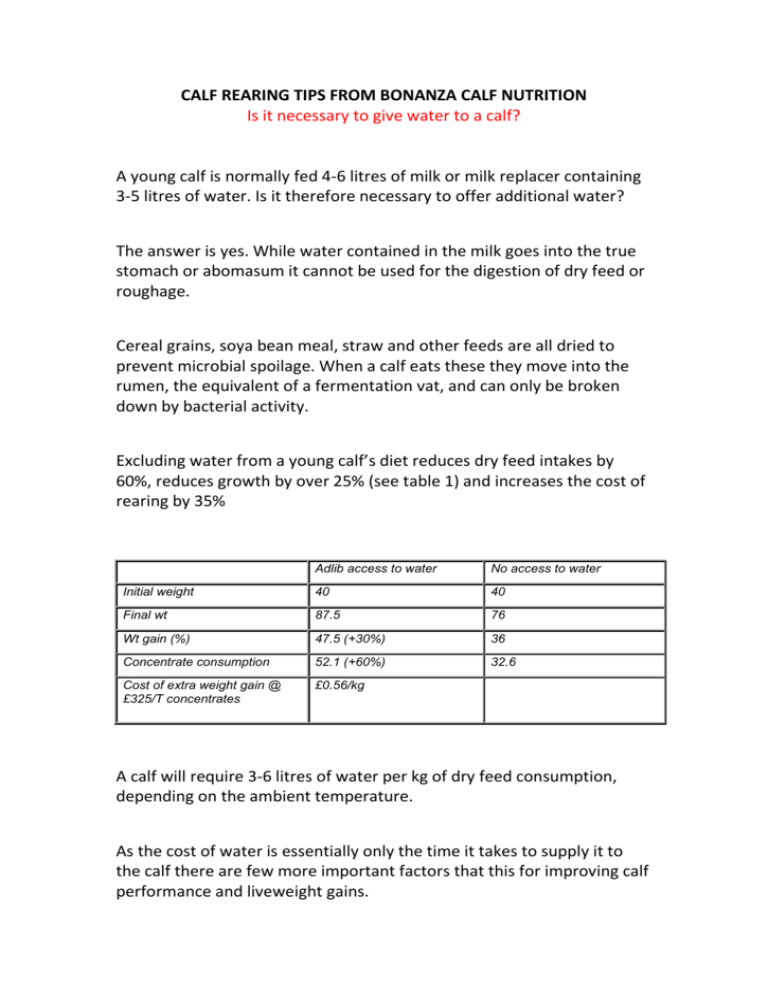
CALF REARING TIPS FROM BONANZA CALF NUTRITION Is it necessary to give water to a calf? A young calf is normally fed 4-6 litres of milk or milk replacer containing 3-5 litres of water. Is it therefore necessary to offer additional water? The answer is yes. While water contained in the milk goes into the true stomach or abomasum it cannot be used for the digestion of dry feed or roughage. Cereal grains, soya bean meal, straw and other feeds are all dried to prevent microbial spoilage. When a calf eats these they move into the rumen, the equivalent of a fermentation vat, and can only be broken down by bacterial activity. Excluding water from a young calf’s diet reduces dry feed intakes by 60%, reduces growth by over 25% (see table 1) and increases the cost of rearing by 35% Adlib access to water No access to water Initial weight 40 40 Final wt 87.5 76 Wt gain (%) 47.5 (+30%) 36 Concentrate consumption 52.1 (+60%) 32.6 Cost of extra weight gain @ £325/T concentrates £0.56/kg A calf will require 3-6 litres of water per kg of dry feed consumption, depending on the ambient temperature. As the cost of water is essentially only the time it takes to supply it to the calf there are few more important factors that this for improving calf performance and liveweight gains. Consideration should also be given to the receptacle used to contain the water. Unless a group of young calves can empty a water trough two or three times a day it is best to use nipple or bowl drinkers instead as this keeps water fresh. It is also preferable to place drinkers outside the pen to reduce contamination of the water by faeces, which can spread diseases such as coccidiosis. Don’t place the water source above a hayrack as hay or straw will contaminate the water. Clean the bowl or trough once a week.
